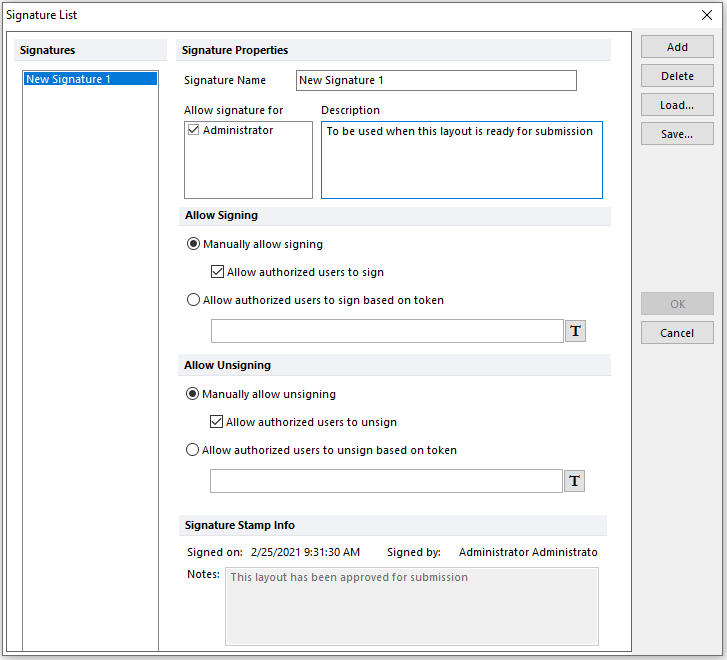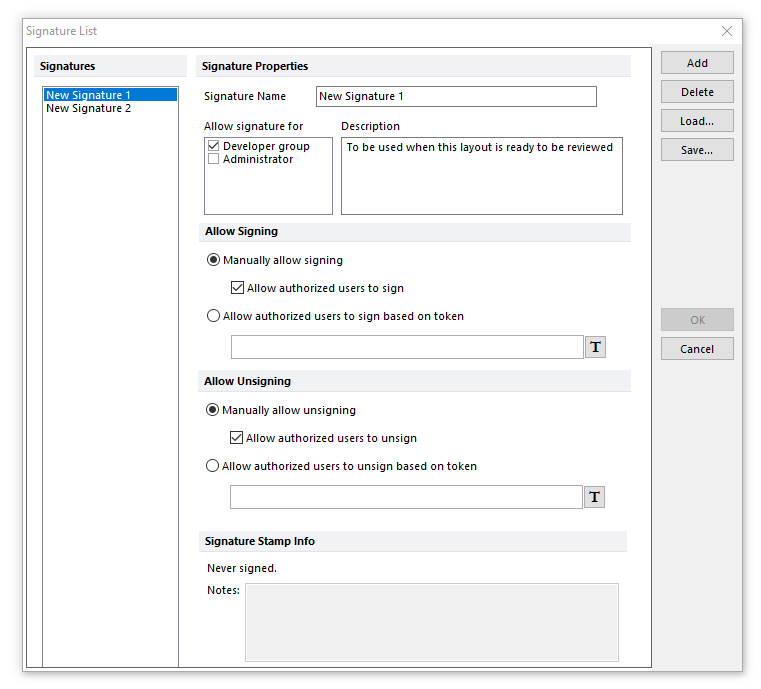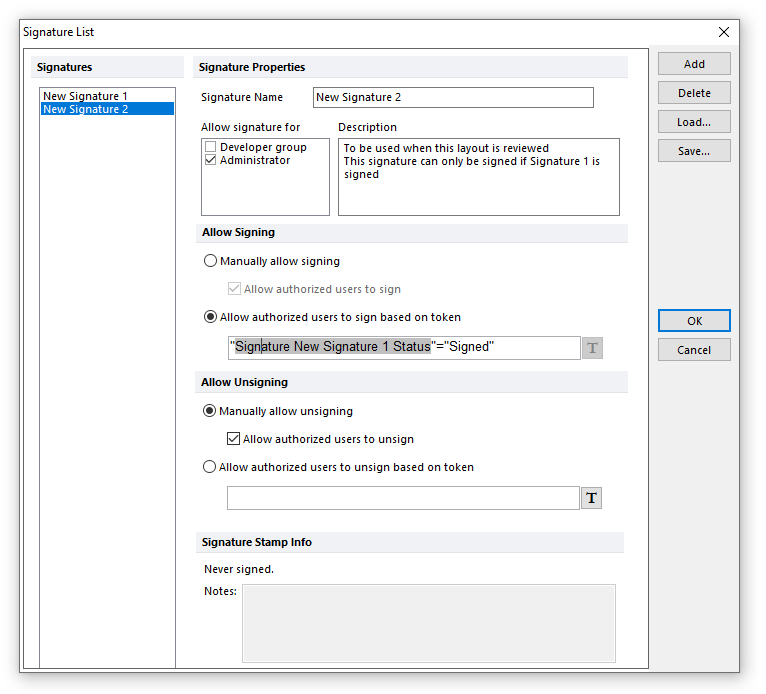Modifying Signatures
To modify an existing signature:
1. Use the File tab→Info→Digital Signatures→Signature List command to bring up the Signature List dialog (if it isn't already visible).
2. Select the signature to modify in the list box on the left. The properties for that signature will appear in the Signature Properties, Allow Signing, and Allow Unsigning portions of the window (Figure 16.4).

Figure 16.4 Modifying a Signature
Signature Properties are defined in the table below.
Property |
Explanation |
|---|---|
Signature Name |
The name of the signature as it will appear in a token in the layout. It usually corresponds to the specific state of the layout (e.g., under review, approved, etc.). |
Allow signature for |
Only users who are members of the security groups that are checked will be allowed to sign under this signature. |
Description |
A short description of the signature. This is used for reference purposes only. |
Notes |
Notes associated with the signature |
Signatures can be set to allow or not allow manual signing and unsigning. Signatures can also be allowed or not allowed based on a token. This feature can be used to enforce a Signature Order where a signature from one particular signature group must be signed before a signature from another signature group is allowed. By utilizing the Allow authorized user to sign / unsign based on a token feature, and using the Signature Status of particular signature groups to evaluate the token to true or fales, signature orders may be enforced . The Allow Signing / Allow Unsigning options are defined in the table below.
Property |
Explanation |
|---|---|
Manually allow signing / unsigning |
Allows users to manually sign / unsign the signature. |
Allow authorized users to sign / unsign |
Allows the signature to be signed / unsigned. If unchecked, the signature will not appear in the Signature List of the Sign / Unsign window. |
Allow authorized users to sign / unsign based on token |
Allows access to the signature for authorized users based on a token or custom token. This allows signatures to be enabled or disabled based on the status of other signatures or tokens. See the use case example below for more details on this feature. |
Signature Order example
In the example below, two signatures have been defined:
•Signature 1 (left pane in the screenshot below)
•Signature 2 (right pane in the screenshot below)
|
|
The Signature Order options have been used for Signature 2 so that Signature 2 can only bie signed when Signature 1 is also signed. Signature order enforcement was done by creating a condition in the Allow authorized users to sign field. In this example, the condition uses the Signature Status token for Signature 1. If the Signature status for Signature 1 equals "Signed", signature 2 would then be allowed to co-sign the document.


